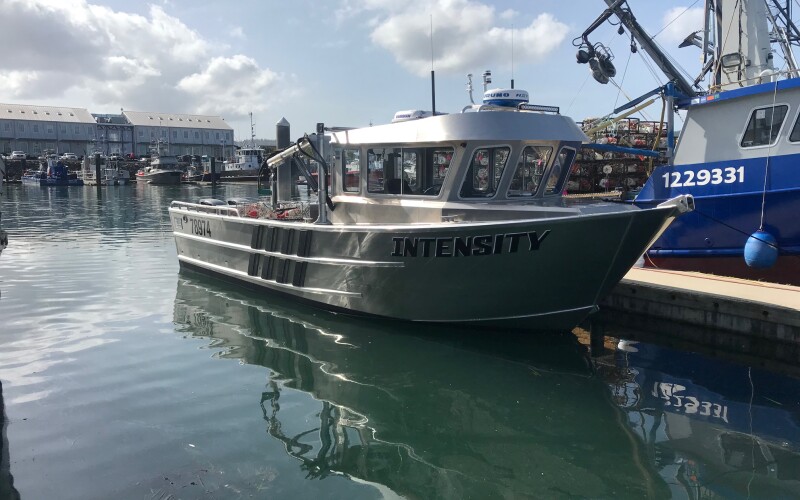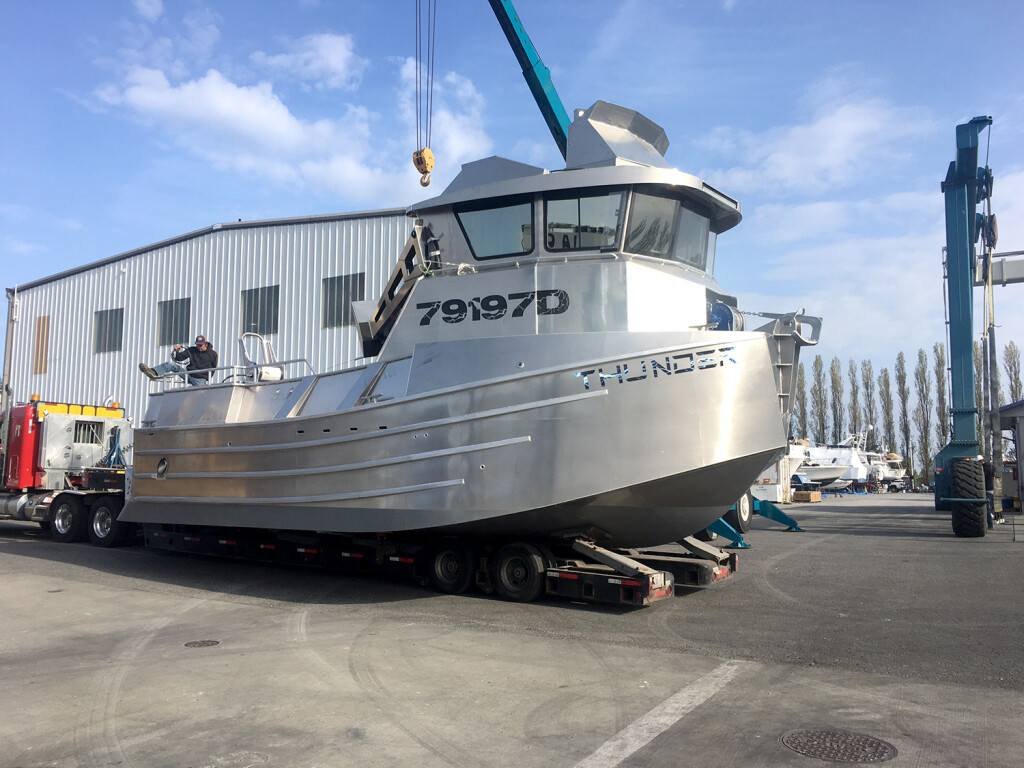After 44 years of building, repairing, finishing off and outfitting commercial fishing boats, Petrzelka Brothers (Joel, Jon and Paul) in Mt. Vernon, Wash., has completed its last commercial fishing boat. The only boat left in the shop is a pleasure boat that will be completed by the end of the year. And when that’s gone, the doors will be shut for good.
That last fishing boat was the Thunder, a 32' x 19' Bristol Bay gillnetter built by Madden Metal Works in Bellingham, Wash. The Thunder has a pair of 800-hp MAN diesels matched up with two Thrustmaster jets, a Pacific West RSW system, and it packs more than 20,000 pounds. Petrzelka Brothers did some outfitting and interior work to finish her off, but not a lot. “The interior was sparse. He wanted to keep it light, so it would go fast. She did around 35 knots,” says Jon Petrzelka.
“By far it was the largest boat we’ve ever done and the largest boat up there (Bristol Bay) that I can think of.” He’s referring not only to the 19-foot beam but to the 18- to 20-foot height of a “fairly tall cabin and a flying bridge.”
Thinking back over the past four decades, Petrzelka reflected on how Bristol Bay gillnetters have changed over the years he and his brothers have been in business. For one thing, most of the boats in the 1970s and early ’80s were fiberglass, and “very few of the Bristol Bay boats had refrigeration. It was ice or nothing.” Of course, fish could be delivered to a tender, which had refrigeration, but it might be several hours before the delivery took place. “Now you want to cool them as quick as you can, almost before they die.”
Back then it was shafts and props that provided the thrust. When waterjets started to be part of a gillnetter’s propulsion system, you could go up shallow and not worry about chewing up nets, “but you probably lost 20 to 30 percent of horsepower as far as thrust,” says Petrzelka. “Jets have become so much more efficient.”
In general, the electronics package on a Bristol Bay gillnetter started pretty simple before becoming more complicated. All you had was a couple of radios, then crude lorans, then GPS and plotters.
Once the doors close, not only is boatbuilding a thing of the past for the Petrzelka brothers but so, too, is the Copper River fishery they worked in the summer.

Velocity Marine and Fabrication in Sedro-Woolley, Wash., recently completed the Intensity, a 35' x 13' aluminum crabber that is fishing out of Westport, Wash., with a 500-hp Cummins 8.3 diesel.
Currently the crew there is building a 36' x 13' crabber that will work Puget Sound as well as Southeast Alaska. It will have a Northern Lights 22-kW genset and a very different propulsion system. Instead of an inboard diesel there will be twin 350-hp Suzuki dual-prop outboards.
“We do a lot of outboard crabbers — almost all,” says Velocity Marine’s Rob Smith. The Suzuki combination should have the crabber pushing 50 mph.
The advantages of an outboard are it weighs less, is faster and is easily replaced. “Something happens to an engine, you can just pull the bolts, take it off and bolt another one on the same day.” In addition, outboards aren’t as expensive. Smith says “you can get 700-hp for roughly $50,000, versus a 700-hp inboard diesel that’s roughly $80,000.”
One of the last boats Velocity Marine built has been getting some attention. That’s the Helisa Marie, a 33' x 11' aluminum landing craft that doubles as a gillnetter and a crabber and was fishing Puget Sound in August. “It’s working amazingly,” says Smith, adding that the owner is very happy with it. The landing craft gillnetter/crabber combo also has a pair of 350-hp Suzuki outboards. At the end of August, Smith said he was talking with a couple of fishermen interested in the same package.







